
Here you can study for the exam. Look up keywords and learn definitions about all kind of subjects.
Rallying is a wide-ranging form of motorsport with various competitive motoring elements such as speed tests (often called rally racing), navigation tests, or the ability to reach waypoints or a destination at a prescribed time or average speed. Rallies may be short in the form of trials at a single venue, or several thousand miles long in an extreme endurance rally. Depending on the format, rallies may be organised on private or public roads, open or closed to traffic, or off-road in the form of cross country or rally-raid. Competitors can use production vehicles which must be road-legal if being used on open roads or specially built competition vehicles suited to crossing specific terrain. Rallying is typically distinguished from other forms of motorsport by not running directly against other competitors over laps of a circuit, but instead in a point-to-point format in which participants leave at regular intervals from one or more start points. (Source: Wikipedia.org, CC BY-SA)
The rings, also known as still rings (in contrast to flying rings), is an artistic gymnastics apparatus and the event that uses it. It is traditionally used only by male gymnasts, due to its extreme upper body strength requirements. Gymnasts often wear ring grips while performing. The apparatus consists of two rings that hang freely from a rigid metal frame. Each ring is supported by a strap, which in turn connects to a steel cable that is suspended from the metal frame. The gymnast, who grips one ring with each hand, must control the movement of the rings and his or her body movements at all times. (Source: Wikipedia.org, CC BY-SA)
Road bicycle racing is the cycle sport discipline of road cycling, held primarily on paved roads. Road racing is the most popular professional form of bicycle racing, in terms of numbers of competitors, events and spectators. The two most common competition formats are mass start events, where riders start simultaneously (though sometimes with a handicap) and race to a set finish point; and time trials, where individual riders or teams race a course alone against the clock. Stage races or 'tours' take multiple days, and consist of several mass-start or time-trial stages ridden consecutively. Professional racing originated in Western Europe, centred in France, Spain, Italy and the Low Countries. Since the mid-1980s, the sport has diversified, with races held at the professional, semi-professional and amateur levels, worldwide. The sport is governed by the Union Cycliste Internationale (UCI). As well as the UCI's annual World Championships for men and women, the biggest event is the Tour de France, a three-week race that can attract over 500,000 roadside supporters a day. (Source: Wikipedia.org, CC BY-SA)
Robot combat is a mode of robot competition in which custom-built machines fight using various methods to incapacitate each other. The machines have generally been remote-controlled vehicles rather than autonomous robots. Robot combat competitions have been made into television series, including Robot Wars in the UK and Battlebots in the US. These shows were originally broadcast in the late 1990s to early 2000s and experienced revivals in the mid-2010s. As well as televised competitions, smaller robot combat events are staged for live audiences such as those organized by the Robot Fighting League. Robot builders are generally hobbyists and the complexity and cost of their machines can vary substantially. Robot combat uses weight classes, with the heaviest robots able to exert more power and destructive capabilities. The rules of competitions are designed for the safety of the builders, operators, and spectators while also providing for an entertaining spectacle. Robot combat arenas are generally surrounded by a bulletproof screen. (Source: Wikipedia.org, CC BY-SA)
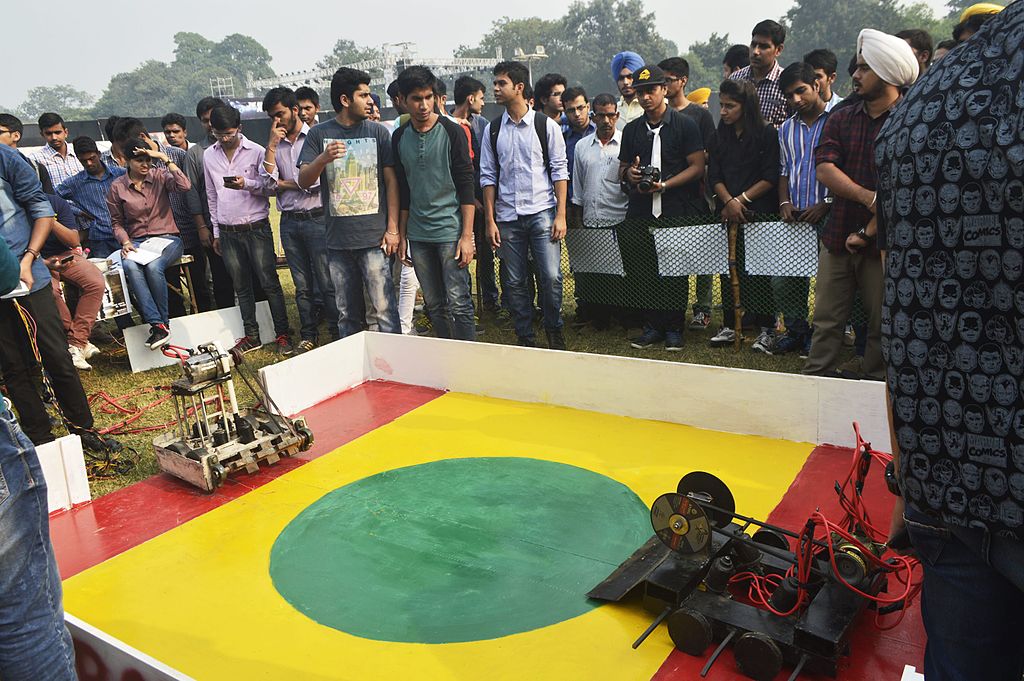 © Wikimedia.org/Onlineteam.pecfest, CC BY-SA
© Wikimedia.org/Onlineteam.pecfest, CC BY-SA
Rope climbing is a sport in which competitors attempt to climb up a suspended vertical rope using only their hands. Rope climbing is practiced regularly at the World Police and Fire Games, and is enjoying a resurgence in France, where competitions are held in shopping centers. Also, enthusiasts in the Czech Republic resurrected the sport in 1993, and hold local and national competitions. (Source: Wikipedia.org, CC BY-SA)
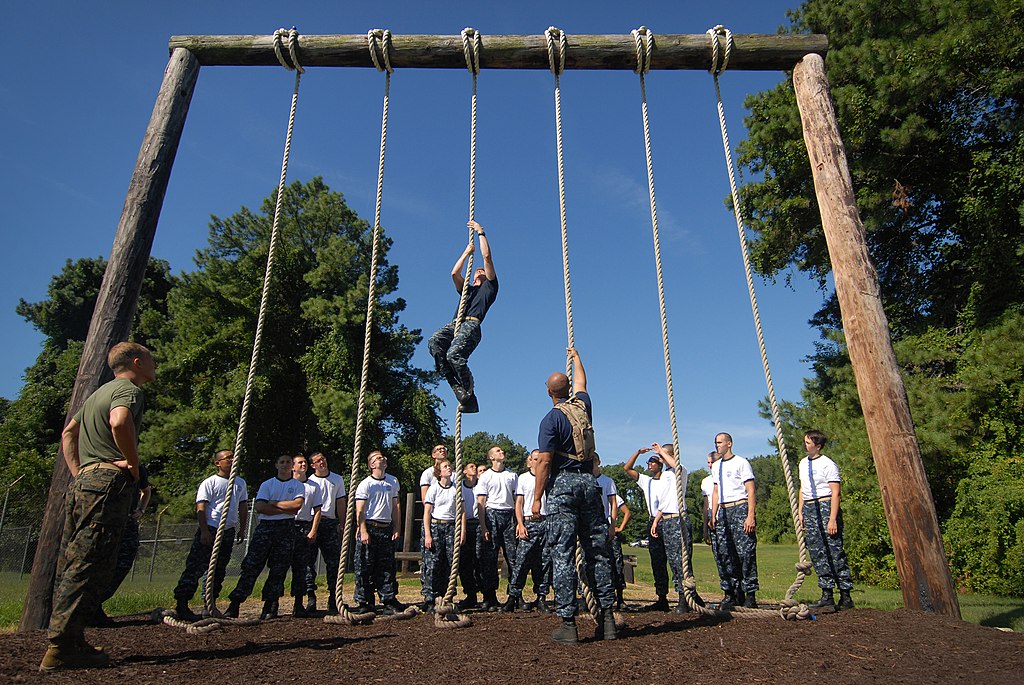 © Wikimedia.org/U.S. Navy/Chad Runge, CC0
© Wikimedia.org/U.S. Navy/Chad Runge, CC0
Rowing is the act of propelling a human-powered watercraft using the sweeping motions of oars to displace water and generate reactional propulsion. Rowing are functionally similar to paddling, but rowing requires oars to be mechanically attached with the boat, and the rower drives the oar like a lever, exerting forces in the same direction of the boat's travel; while paddles are completely hand-held and have no attachment to the boat, and are driven like a cantilever, exerting forces opposite to the intended direction of the boat. In some strict terminologies, using oars for propulsion may be termed either 'pulling' or 'rowing', with different definitions for each. Where these strict terminologies are used, the definitions are reversed depending on the context: on saltwater a 'pulling boat' has each person working one oar on either side of the boat, whilst 'rowing' means each person operates two oars on both sides of the boat. On inland waterways, the opposite applies, with 'rowing' being where each person in a crew works one oar; while the word 'sculling' is used to mean propelling a boat with a single oar operated over the stern (i.e. stern sculling) or, especially in sport rowing, each rower (of a single-, double- or four-member crew) operating two oars. (Source: Wikipedia.org, CC BY-SA)
Rugby football is the collective name for the team sports of rugby union and rugby league. Canadian football and, to a lesser extent, American football were once considered forms of rugby football, but are seldom now referred to as such. The governing body of Canadian football, Football Canada, was known as the Canadian Rugby Union as late as 1967, more than fifty years after the sport parted ways with rugby rules. Rugby football started about 1845 at Rugby School in Rugby, Warwickshire, England, although forms of football in which the ball was carried and tossed date to the Middle Ages (see medieval football). Rugby football spread to other English public schools in the 19th century and across the British Empire as former pupils continued to play it. (Source: Wikipedia.org, CC BY-SA)
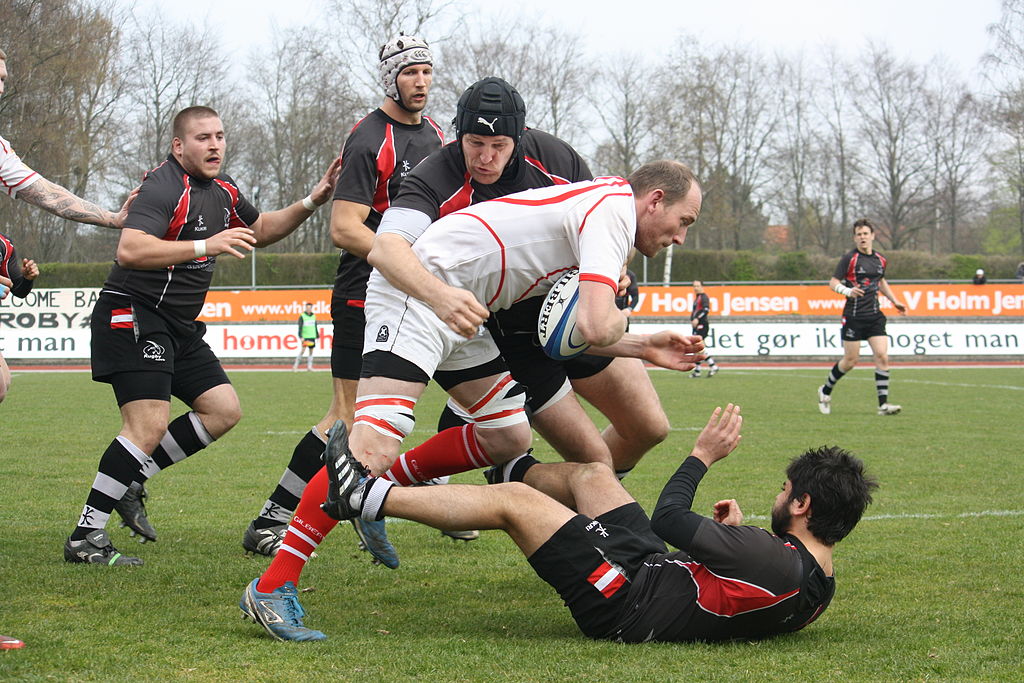 © Wikimedia.org/cloedvarga, CC BY
© Wikimedia.org/cloedvarga, CC BY
Run archery is a shooting discipline connecting archery with running. It is similar to the sport of biathlon. Like in the sport of biathlon, participants start with running, and alternate between running and shooting series of three arrows at a 20-centimetre-wide (7.9 in) target from 20 m (22 yards) away. For scoring, it does not matter whether the target is hit in the center or at the edge. For each missed shot the athlete must run a penalty loop. The number of laps and target sizes depend on age and bow type. At the end, the fastest athlete wins. The bow must be held in hand during running; arrows can be left at the shooting range or may be carried in a back quiver. (Source: Wikipedia.org, CC BY-SA)
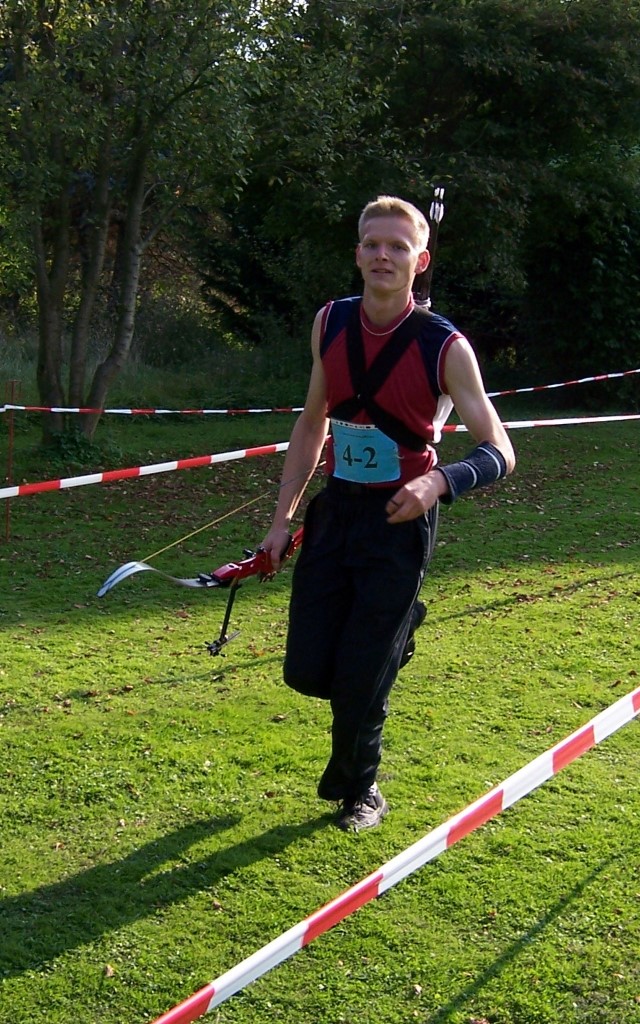 © Wikimedia.org/Marco, CC BY-SA
© Wikimedia.org/Marco, CC BY-SA
The sport of sailing involves a variety of competitive sailing formats that are sanctioned through various sailing federations and yacht clubs. Racing disciplines include matches within a fleet of sailing craft, between a pair thereof or among teams. Additionally, there are specialized competitions that include setting speed records. Racing formats include both closed courses and point-to-point contests; they may be in sheltered waters, coast-wise or on the open ocean. Most competitions are held within defined classes or ratings that either entail one type of sailing craft to ensure a contest primarily of skill or rating the sailing craft to create classifications or handicaps. (Source: Wikipedia.org, CC BY-SA)
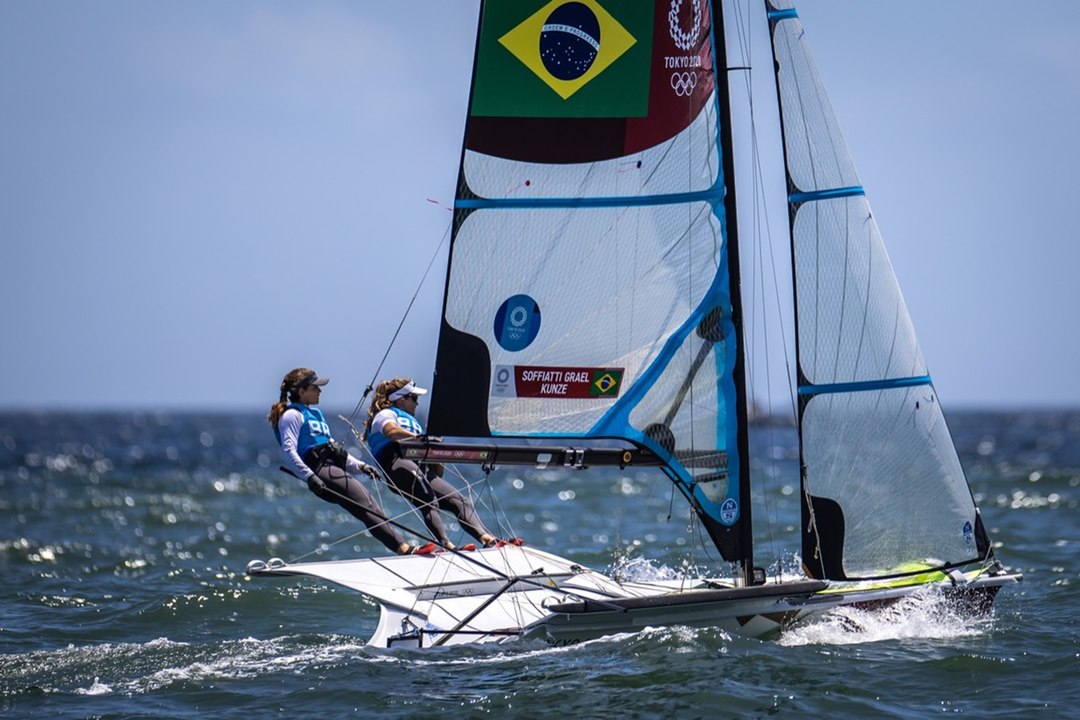 © Wikimedia.org/Rede do Esporte, CC BY
© Wikimedia.org/Rede do Esporte, CC BY
Sandboarding is a boardsport and extreme sport similar to snowboarding that involves riding across or down a sand dune while standing on a board, either with both feet strapped in or while standing loose, without bindings. Sandboarding can also be practised sitting down or lying on the belly or the back. It typically involves a sandboard, although it is also possible to use sleds, surfboards, a skateboard deck, or snowboards. Sandboarding has adherents throughout the world, but is most prevalent in desert areas or coastal areas with beach dunes. It is less popular than snowboarding, partly because it is very difficult to build a mechanised ski lift on a sand dune, meaning participants must walk or ride a dune buggy or all-terrain vehicle back to the top of the dune. On the other hand, dunes are normally available year-round as opposed to ski resorts, which are seasonal. (Source: Wikipedia.org, CC BY-SA)
Scuba diving is a mode of underwater diving whereby divers use breathing equipment that is completely independent of a surface air supply. The name 'scuba', an acronym for 'Self-Contained Underwater Breathing Apparatus', was coined by Christian J. Lambertsen in a patent submitted in 1952. Scuba divers carry their own source of breathing gas, usually compressed air, affording them greater independence and movement than surface-supplied divers, and more time underwater than free divers. Although the use of compressed air is common, a gas blend with a higher oxygen content, known as enriched air or nitrox, has become popular due to the reduced nitrogen intake during long and/or repetitive dives. Also, breathing gas diluted with helium may be used to reduce the likelihood and effects of nitrogen narcosis during deeper dives. (Source: Wikipedia.org, CC BY-SA)
The shot put is a track and field event involving 'putting' (throwing) a heavy spherical ball—the shot—as far as possible. The shot put competition for men has been a part of the modern Olympics since their revival in 1896, and women's competition began in 1948. Shot put competitions have been held at the modern Summer Olympic Games since their inception in 1896, and it is also included as an event in the World Athletics Championships. Each of these competitions in the modern era have a set number of rounds of throws. Typically there are three qualification rounds to determine qualification for the final. There are then three preliminary rounds in the final with the top eight competitors receiving a further three throws. Each competitor in the final is credited with their longest throw, regardless of whether it was achieved in the preliminary or final three rounds. The competitor with the longest legal put is declared the winner. (Source: Wikipedia.org, CC BY-SA)
Skateboarding is an action sport originating in the United States that involves riding and performing tricks using a skateboard, as well as a recreational activity, an art form, an entertainment industry job, and a method of transportation. Skateboarding has been shaped and influenced by many skateboarders throughout the years. A 2009 report found that the skateboarding market is worth an estimated $4.8 billion in annual revenue, with 11.08 million active skateboarders in the world. In 2016, it was announced that skateboarding would be represented at the 2020 Summer Olympics in Tokyo, for both male and female teams. Since the 1970s, skateparks have been constructed specifically for use by skateboarders, freestyle BMXers, aggressive skaters, and more recently, scooters. However, skateboarding has become controversial in areas in which the activity, although illegal, has damaged curbs, stoneworks, steps, benches, plazas, and parks. (Source: Wikipedia.org, CC BY-SA)
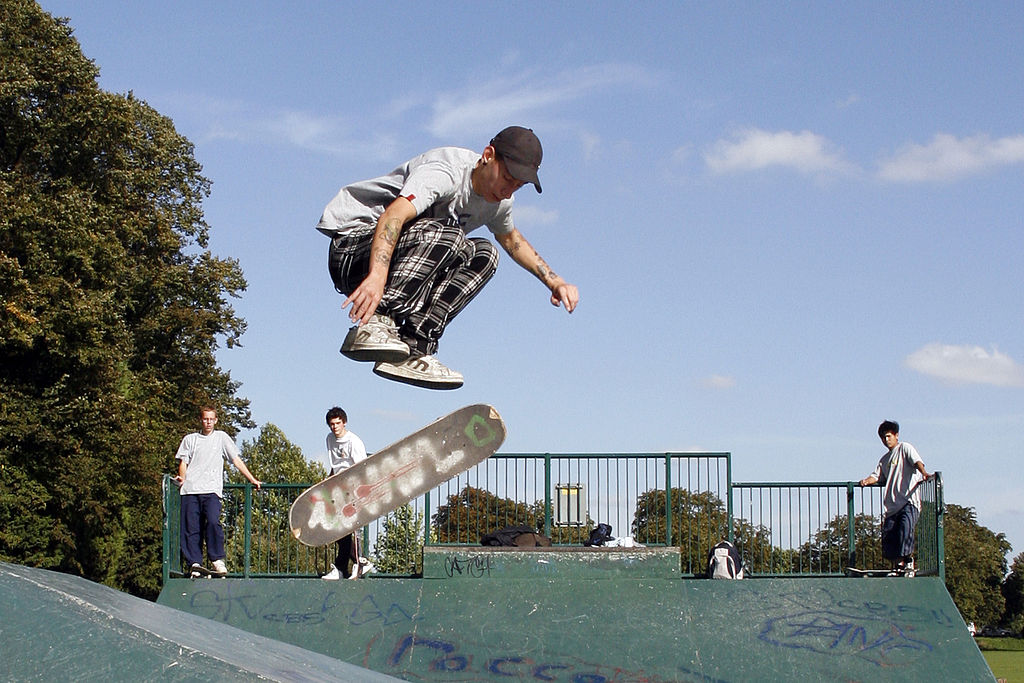 © Wikimedia.org/DemonTraitor, CC BY-SA
© Wikimedia.org/DemonTraitor, CC BY-SA
Ski flying is a winter sport discipline derived from ski jumping, in which much greater distances can be achieved. It is a form of competitive individual Nordic skiing where athletes descend at high speed along a specially designed takeoff ramp using skis only; jump from the end of it with as much power as they can generate; then glide – or 'fly' – as far as possible down a steeply sloped hill; and ultimately land within a target zone in a stable manner. Points are awarded for distance and stylistic merit by five judges. Events are governed by the International Ski Federation (Fédération Internationale de Ski; FIS). The rules and scoring in ski flying are mostly the same as they are in ski jumping, and events under the discipline are usually contested as part of the FIS Ski Jumping World Cup season, but the hills (of which there are only five remaining, all in Europe) are constructed to different specifications in order to enable jumps of up to 66% longer in distance. There is also a stronger emphasis on aerodynamics and harnessing the wind, as well as an increased element of danger due to athletes flying much higher and faster than in ski jumping. (Source: Wikipedia.org, CC BY-SA)
Skibobbing (also called skibiking or snowbiking) is a winter sport involving a bicycle-type frame attached to skis instead of wheels and sometimes a set of foot skis. The use of foot skis is what defines 'skibobbing'. Although skibobs are often called ski bikes or snow bikes, they are different, and the sport should also not be confused with snowbiking, which is the sport or recreation of bicycling on snow. Type-1 skibobs have no suspension. Suspended designs are Type-2 'freestyle' skibobs. (Source: Wikipedia.org, CC BY-SA)
A skipping rope (British English) or jump rope (American English) is a tool used in the sport of skipping/jump rope where one or more participants jump over a rope swung so that it passes under their feet and over their heads. There are multiple subsets of skipping/jump rope, including single freestyle, single speed, pairs, three-person speed (Double Dutch), and three-person freestyle (Double Dutch freestyle). Rope skipping is commonly performed as an exercise or recreational activity, and there are also several major organizations that support jump rope as a competitive sport. Often separated by sex and age, events include hundreds of competitive teams all around the world. In the US, schools rarely have jump rope teams, and few states have sanctioned official events at the elementary school level. In freestyle events, jumpers use a variety of basic and advanced techniques in a routine of one minute, which is judged by a head judge, content judges, and performance judges. In speed events, a jumper alternates their feet with the rope going around the jumper every time one of their feet hits the ground for 30 seconds, one minute, or three minutes. The jumper is judged on the number of times the right foot touches the ground in those times. (Source: Wikipedia.org, CC BY-SA)
Slacklining refers to the act of walking, running or balancing along a suspended length of flat webbing that is tensioned between two anchors. Slacklining is similar to slack rope walking and tightrope walking. Slacklines differ from tightwires and tightropes in the type of material used and the amount of tension applied during use. Slacklines are tensioned significantly less than tightropes or tightwires in order to create a dynamic line which will stretch and bounce like a long and narrow trampoline. Tension can be adjusted to suit the user, and different webbing may be used in various circumstances. (Source: Wikipedia.org, CC BY-SA)
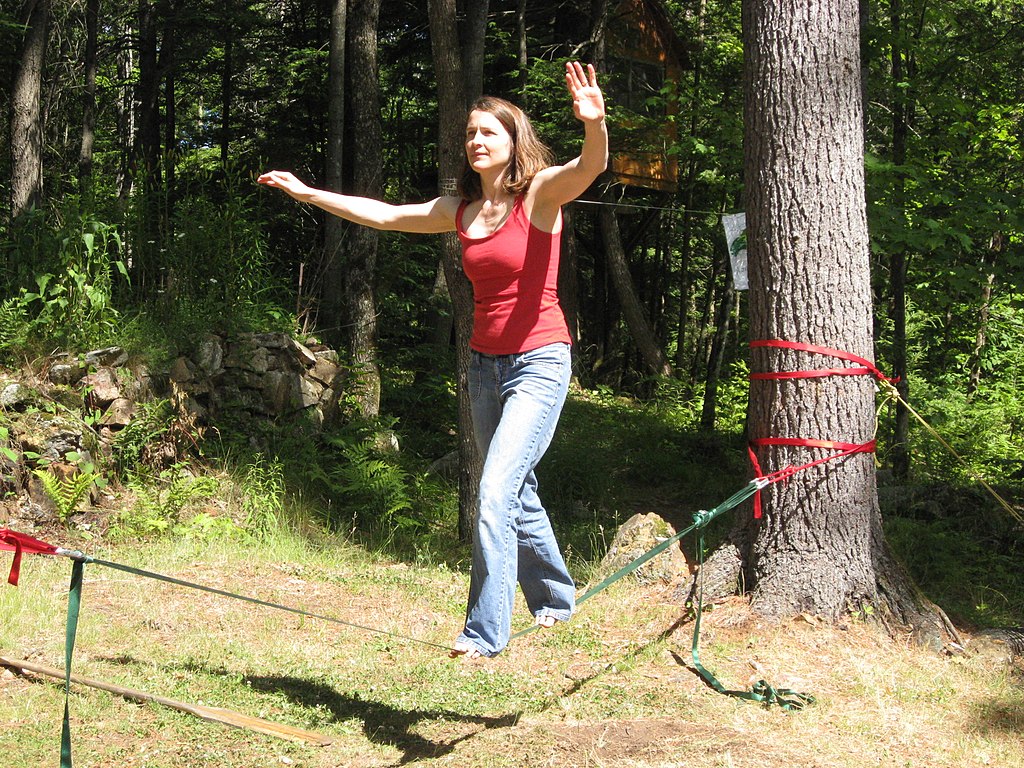 © Wikimedia.org/Shawn Goldwater, CC0
© Wikimedia.org/Shawn Goldwater, CC0
Sledge hockey, also known as Sled hockey in American English, and Para ice hockey in international competition, is an adaptation of ice hockey for players who have a physical disability. The sport was invented in the early 1960s at a rehabilitation centre in Stockholm, Sweden,[citation needed] and played under similar rules to standard ice hockey. Players are seated on sleds and use special hockey sticks with metal 'teeth' on the tips of their handles to navigate the ice. Playing venues use an ice hockey rink. Essentially all of the standard rules of ice hockey apply to sledge hockey. The differences are those necessitated by the ice sled and the athlete. The first set of international rules was created in 1990 and were drafted from Canadian rules. The only penalty unique to sledge hockey is Teeing—the act of charging an opponent using any part of the front radius of the sled. Players with limited mobility in their arms are permitted the use of a non-disabled assistant. Pushers must wear a team jersey and safety equipment, and cannot exceed the speed of the average player on the ice nor can they enter the 'house' (the area extending from the goal crease to the end-zone faceoff dots, extended to the top of the faceoff circles) while in the defensive zone. Games are divided into three 15-minute periods. If there is a tie at the end of regulation time, it is followed by overtime, and if still tied after the overtime period, a shootout occurs to determine the winning team. (Source: Wikipedia.org, CC BY-SA)
Snorkeling (British and Commonwealth English spelling: snorkelling) is the practice of swimming on or through a body of water while equipped with a diving mask, a shaped breathing tube called a snorkel, and usually swimfins. In cooler waters, a wetsuit may also be worn. Use of this equipment allows the snorkeler to observe underwater attractions for extended periods with relatively little effort and to breathe while face-down at the surface. Snorkeling is a popular recreational activity, particularly at tropical resort locations. It provides the opportunity to observe underwater life in a natural setting without the complicated equipment and training required for scuba diving. It appeals to all ages because of how little effort is involved and is the basis of the two surface disciplines of the underwater sport of finswimming. Snorkeling is also used by scuba divers when on the surface, in underwater sports such as underwater hockey and underwater rugby, and as part of water-based searches conducted by search and rescue teams. (Source: Wikipedia.org, CC BY-SA)
Snowboarding is a recreational and competitive activity that involves descending a snow-covered surface while standing on a snowboard that is almost always attached to a rider's feet. It features in the Winter Olympic Games and Winter Paralympic Games. Since snowboarding's inception as an established winter sport, it has developed various styles, each with its own specialized equipment and technique. The most common styles today are: freeride, freestyle, and freecarve/race. These styles are used for both recreational and professional snowboarding. While each style is unique, there is overlap between them. (Source: Wikipedia.org, CC BY-SA)
A snowmobile, also known as a Ski-Doo, snowmachine, sled, motor sled, motor sledge, skimobile, or snow scooter, is a motorized vehicle designed for winter travel and recreation on snow. It is designed to be operated on snow and ice and does not require a road or trail, but most are driven on open terrain or trails. Snowmobiling is a sport that many people have taken on as a serious hobby. As a result of their inherent maneuverability, acceleration, and high-speed abilities, skill and physical strength are both required to operate a snowmobile. Snowmobile injuries and fatalities are high compared to those caused by on road motor vehicle traffic. Losing control of a snowmobile could easily cause extensive damage, injury, or death. One such cause of snowmobile accidents is loss of control from a loose grip. If the rider falls off, the loss of control can easily result in the snowmobile colliding with a nearby object, such as a rock or tree. Most snowmobiles are fitted with a cord connected to a kill switch, which would stop the snowmobile if the rider falls off; however, not all riders use this device every time they operate a snowmobile. (Source: Wikipedia.org, CC BY-SA)
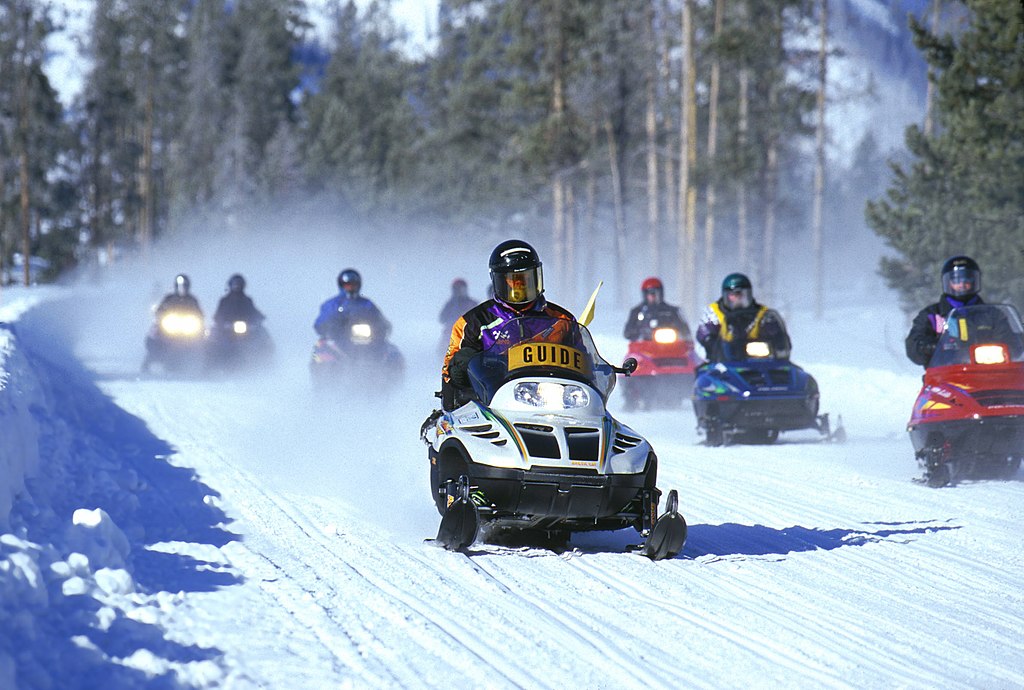 © Wikimedia.org/NPS Photo, CC0
© Wikimedia.org/NPS Photo, CC0
Snowshoe running, or snowshoeing, is a winter sport practiced with snowshoes, which is governed by World Snowshoe Federation (WSSF) founded in 2010, which until 2015 had its name International Snowshoe Federation (ISSF). The snowshoes running is part of the Special Olympics and Arctic Winter Games programs. (Source: Wikipedia.org, CC BY-SA)
Speed skating is a competitive form of ice skating in which the competitors race each other in travelling a certain distance on skates. Types of speed skating are long track speed skating, short track speed skating, and marathon speed skating. In the Olympic Games, long-track speed skating is usually referred to as just 'speed skating', while short-track speed skating is known as 'short track'. The International Skating Union (ISU), the governing body of competitive ice sports, refers to long track as 'speed skating' and short track as 'short track skating'. An international federation was founded in 1892, the first for any winter sport. The sport enjoys large popularity in the Netherlands, Norway and South Korea. There are top international rinks in a number of other countries, including Canada, the United States, Germany, Italy, Japan, Russia, Kazakhstan, China, Belarus and Poland. A World Cup circuit is held with events in those countries plus two events in the Thialf ice hall in Heerenveen, Netherlands. (Source: Wikipedia.org, CC BY-SA)
Sprinting is running over a short distance at the top-most speed of the body in a limited period of time. It is used in many sports that incorporate running, typically as a way of quickly reaching a target or goal, or avoiding or catching an opponent. Human physiology dictates that a runner's near-top speed cannot be maintained for more than 30–35 seconds due to the depletion of phosphocreatine stores in muscles, and perhaps secondarily to excessive metabolic acidosis as a result of anaerobic glycolysis. In athletics and track and field, sprints (or dashes) are races over short distances. They are among the oldest running competitions, being recorded at the Ancient Olympic Games. Three sprints are currently held at the modern Summer Olympics and outdoor World Championships: the 100 metres, 200 metres, and 400 metres. (Source: Wikipedia.org, CC BY-SA)
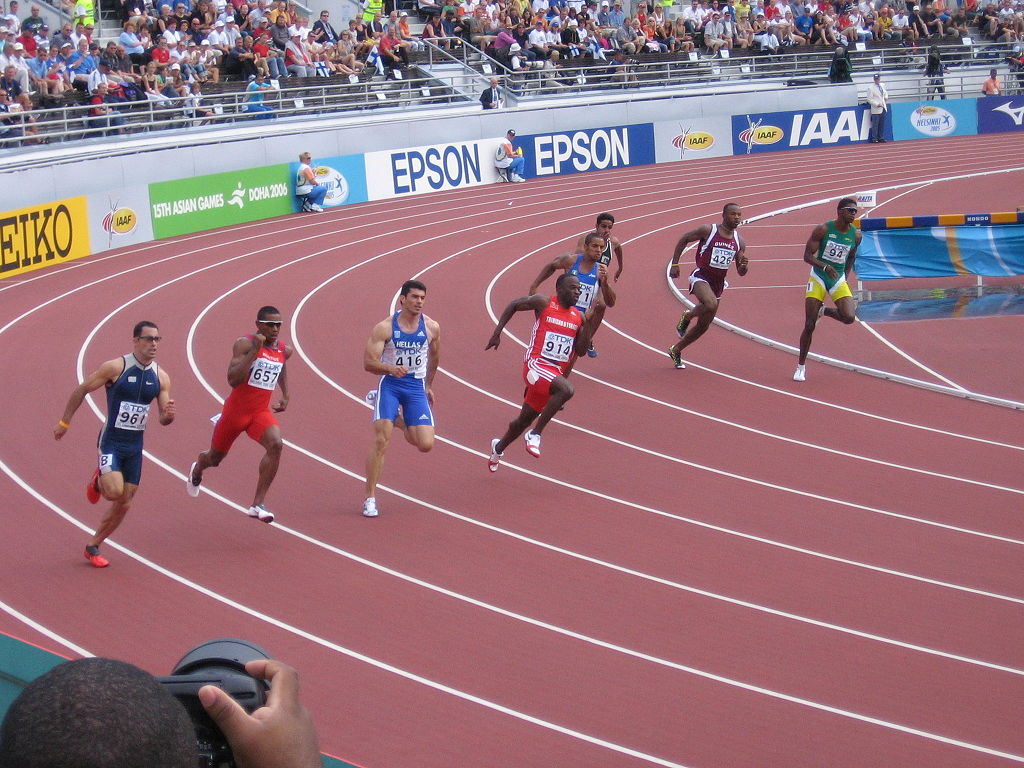 © Wikimedia.org/Zen, CC BY-SA
© Wikimedia.org/Zen, CC BY-SA
Squash is a racket and ball sport played by two or four players in a four-walled court with a small, hollow, rubber ball. The players alternate in striking the ball with their rackets onto the playable surfaces of the four walls of the court. The objective of the game is to hit the ball in such a way that the opponent is not able to play a valid return. There are about 20 million people who play squash regularly world-wide in over 185 countries. The governing body of Squash, the World Squash Federation (WSF), is recognized by the International Olympic Committee (IOC), but the sport is not part of the Olympic Games, despite a number of applications. Supporters continue to lobby for its incorporation in a future Olympic program. The Professional Squash Association (PSA) organizes the pro tour. (Source: Wikipedia.org, CC BY-SA)
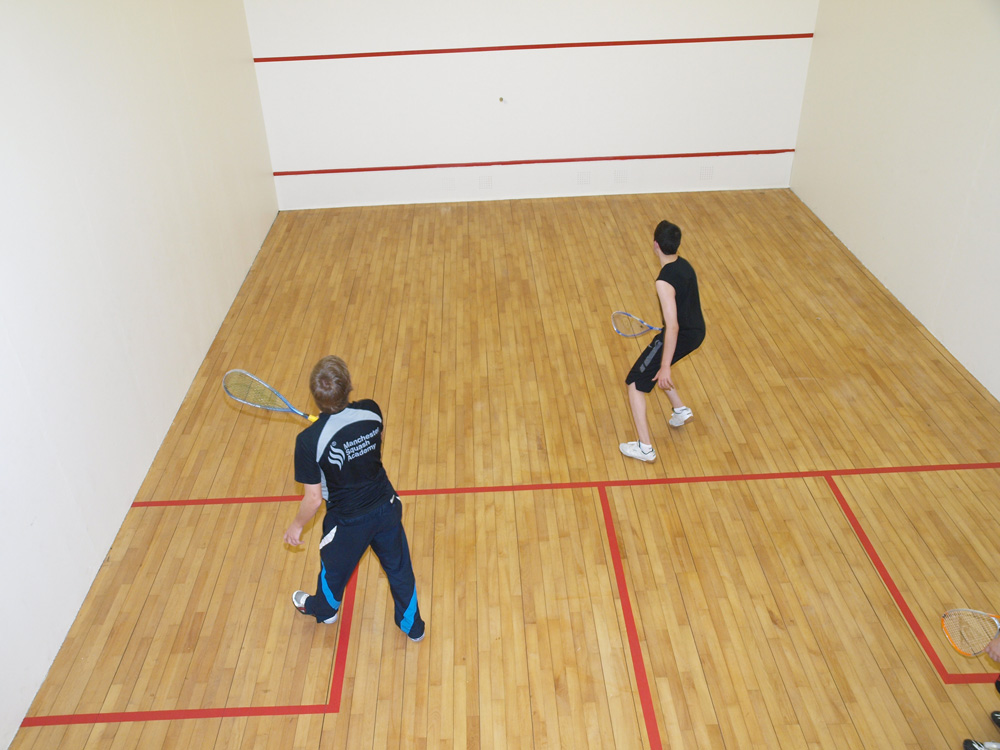 © Wikimedia.org/Sallyannewilliamson, CC0
© Wikimedia.org/Sallyannewilliamson, CC0
Stone skipping and stone skimming are considered related but distinct activities: both refer to the art of throwing a flat stone across the water in such a way (usually sidearm) that it bounces off the surface. The objective of 'skipping' is to see how many times a stone can bounce before it sinks into the water; the objective of 'skimming' is to see how far a bouncing stone can travel across the water before it sinks into the water. In Japan, the practice is referred to as Mizu Kiri, which loosely translates to 'water cutting'. In Mizu Kiri contests, both skimming and skipping principles, as well as a throw's overall aesthetic quality, are taken into account to determine the winners. (Source: Wikipedia.org, CC BY-SA)
Street luge is an extreme gravity-powered activity that involves riding a street luge board (sometimes referred to as a sled) down a paved road or course. Street luge is also known as land luge or road luge. Like skateboarding, street luge is often done for sport and for recreation. Other than the supine riding position and very high speeds (70–102 mph / 112–164 km/h), street luge has little relation to its winter namesake (luge). Current street luge boards are made from many materials including steel, aluminum, wood, and carbon fibre. The majority of the street luge boards in the world are custom made although commercial models are now available. Actual board designs can vary as the construction rules are very open and allow for numerous design considerations. (Source: Wikipedia.org, CC BY-SA)
Sumo (Japanese: 相撲, Hepburn: sumō, [sɯmoː], lit. 'striking one another') is a form of competitive full-contact wrestling where a rikishi (wrestler) attempts to force his opponent out of a circular ring (dohyō) or into touching the ground with any body part other than the soles of his feet (usually by throwing, shoving or pushing him down). Sumo originated in Japan, the only country where it is practiced professionally and where it is considered the national sport. It is considered a gendai budō, which refers to modern Japanese martial arts, but the sport has a history spanning many centuries. Many ancient traditions have been preserved in sumo, and even today the sport includes many ritual elements, such as the use of salt purification, from Shinto. Life as a wrestler is highly regimented, with rules regulated by the Japan Sumo Association. Most sumo wrestlers are required to live in communal sumo training stables, known in Japanese as heya, where all aspects of their daily lives—from meals to their manner of dress—are dictated by strict tradition. (Source: Wikipedia.org, CC BY-SA)
Surfing is a surface water sport in which an individual, a surfer (or two in tandem surfing), uses a board to ride on the forward section, or face, of a moving wave of water, which usually carries the surfer towards the shore. Waves suitable for surfing are primarily found on ocean shores, but can also be found in standing waves in the open ocean, in lakes, in rivers in the form of a tidal bore, or in wave pools. The term surfing refers to a person riding a wave using a board, regardless of the stance. There are several types of boards. The Moche of Peru would often surf on reed craft, while the native peoples of the Pacific surfed waves on alaia, paipo, and other such water craft. Ancient cultures often surfed on their belly and knees, while the modern-day definition of surfing most often refers to a surfer riding a wave standing on a surfboard; this is also referred to as stand-up surfing. (Source: Wikipedia.org, CC BY-SA)
Table football, also known as foosball, table soccer, Taca Taca in Chile and Metegol in Argentina is a table-top game that is loosely based on association football. The aim of the game is to move the ball into the opponent's goal by manipulating rods which have figures attached. Although rules often vary by country and region when the game is played casually, at the competitive level table soccer is played according to a unified code. The game involves using figures mounted on rotating bars to kick a ball into the opposing goal. Table football tables can vary in size, but a typical table is about 120 centimetres (3.9 ft) long and 61 centimetres (2.00 ft) wide. The table usually contains eight rows of foos men, which are plastic, metal, wooden, or sometimes carbon-fibre figures mounted on horizontal metal bars. Each team of one or two human players controls four rows of foos men, one row each for the goalkeeper, defenders, midfield and strikers. (Source: Wikipedia.org, CC BY-SA)
Table tennis, also known as ping-pong and whiff-whaff, is a sport in which two or four players hit a lightweight ball, also known as the ping-pong ball, back and forth across a table using small solid rackets. The game takes place on a hard table divided by a net. Except for the initial serve, the rules are generally as follows: players must allow a ball played toward them to bounce once on their side of the table and must return it so that it bounces on the opposite side at least once. A point is scored when a player fails to return the ball within the rules. Play is fast and demands quick reactions. Spinning the ball alters its trajectory and limits an opponent's options, giving the hitter a great advantage. Table tennis is governed by the worldwide organization International Table Tennis Federation (ITTF), founded in 1926. ITTF currently includes 226 member associations. The table tennis official rules are specified in the ITTF handbook. Table tennis has been an Olympic sport since 1988, with several event categories. From 1988 until 2004, these were men's singles, women's singles, men's doubles and women's doubles. Since 2008, a team event has been played instead of the doubles. (Source: Wikipedia.org, CC BY-SA)
Taekwondo, Tae Kwon Do or Taekwon-Do (/ˌtaɪkwɒnˈdoʊ, ˌtaɪˈkwɒndoʊ/; Korean: 태권도/跆拳道 [tʰɛ.k͈wʌn.do] ) is a Korean form of martial arts involving punching and kicking techniques, with emphasis on head-height kicks, spinning jump kicks, and fast kicking techniques. The literal translation for tae kwon do is 'kicking', 'punching', and 'the art or way of'. They are a kind of martial arts in which one attacks or defends with hands and feet anytime or anywhere, with occasional use of weapons. The physical training undertaken in Taekwondo is purposeful and fosters strength of mind through mental armament. Taekwondo practitioners wear a uniform, known as a dobok. It is a combat sport and was developed during the 1940s and 1950s by Korean martial artists with experience in martial arts such as karate, Chinese martial arts, and indigenous Korean martial arts traditions such as Taekkyon, Subak, and Gwonbeop. (Source: Wikipedia.org, CC BY-SA)
Tennis is a racket sport that is played either individually against a single opponent (singles) or between two teams of two players each (doubles). Each player uses a tennis racket that is strung with cord to strike a hollow rubber ball covered with felt over or around a net and into the opponent's court. The object of the game is to manoeuvre the ball in such a way that the opponent is not able to play a valid return. The player who is unable to return the ball validly will not gain a point, while the opposite player will. Tennis is an Olympic sport and is played at all levels of society and at all ages. The sport can be played by anyone who can hold a racket, including wheelchair users. The modern game of tennis originated in Birmingham, England, in the late 19th century as lawn tennis. It had close connections both to various field (lawn) games such as croquet and bowls as well as to the older racket sport today called real tennis. (Source: Wikipedia.org, CC BY-SA)
Teqball is a ball sport that is played on a curved table, combining elements of sepak takraw and table tennis. Back and forth, the players hit a football with any part of the body except arms and hands. Teqball can be played between two players as a singles game, or between four players as a doubles game. The game is represented at an international level by the International Federation of Teqball (FITEQ). A number of world-class footballers have been attracted by the game, and after being added to the programmes for the 2021 Asian Beach Games and the 2023 European Games, the sport is now aiming for Olympic inclusion. Teqball became the world’s fastest-recognised sport in August 2018 when its highest governing body FITEQ was officially recognised by the Olympic Committee of Asia (OCA). In June 2019 it was officially recognised by the Association of National Olympic Committees of Africa (ANOCA). (Source: Wikipedia.org, CC BY-SA)
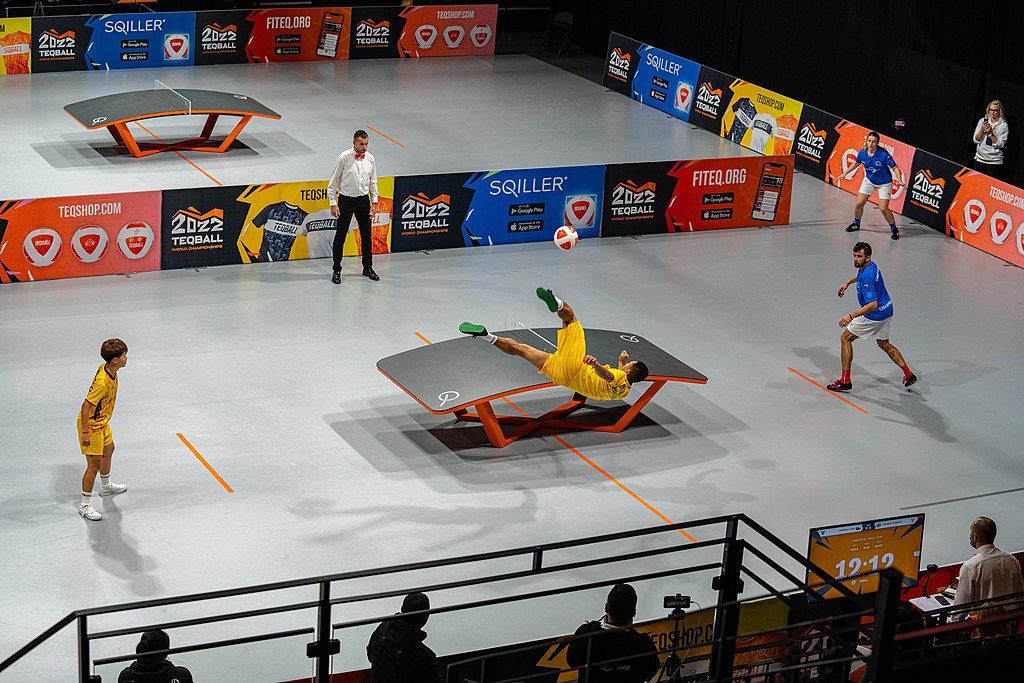 © Wikimedia.org/Rodrik2, CC BY-SA
© Wikimedia.org/Rodrik2, CC BY-SA
A thumb war (also called thumb wrestling, pea-knuckle or pea-knuckle war in New Zealand) is a game played by two players in which the thumbs are used to simulate fighting. The objective of the game is to pin the opponent's thumb, often to a count of ten. The San Francisco Chronicle called the game 'the miniature golf of martial sports.' The players face each other and each holds out their left hand or right hand in a 'thumbs up', and they link hands such that each player's fingers curl around the other player's fingers. Players may not use any of the fingers except the thumb to pin down their opponent's thumb. Gameplay has several tactics such as 'playing possum', aiming for the knuckle rather than the nail for a pin, going for a quick strike, and waiting for one's opponent to tire. Variations include making the thumbs 'bow', 'kiss', or both before warring, and to war with both hands at once; or sneak attacks, which involve using your pointer finger to take over the opponent. Players may also engage in the Rabbit Hole maneuver, or ducking their thumb down into their own palm, to escape imminent defeat. These additions are optional and do not need to be included into the rules of play. (Source: Wikipedia.org, CC BY-SA)
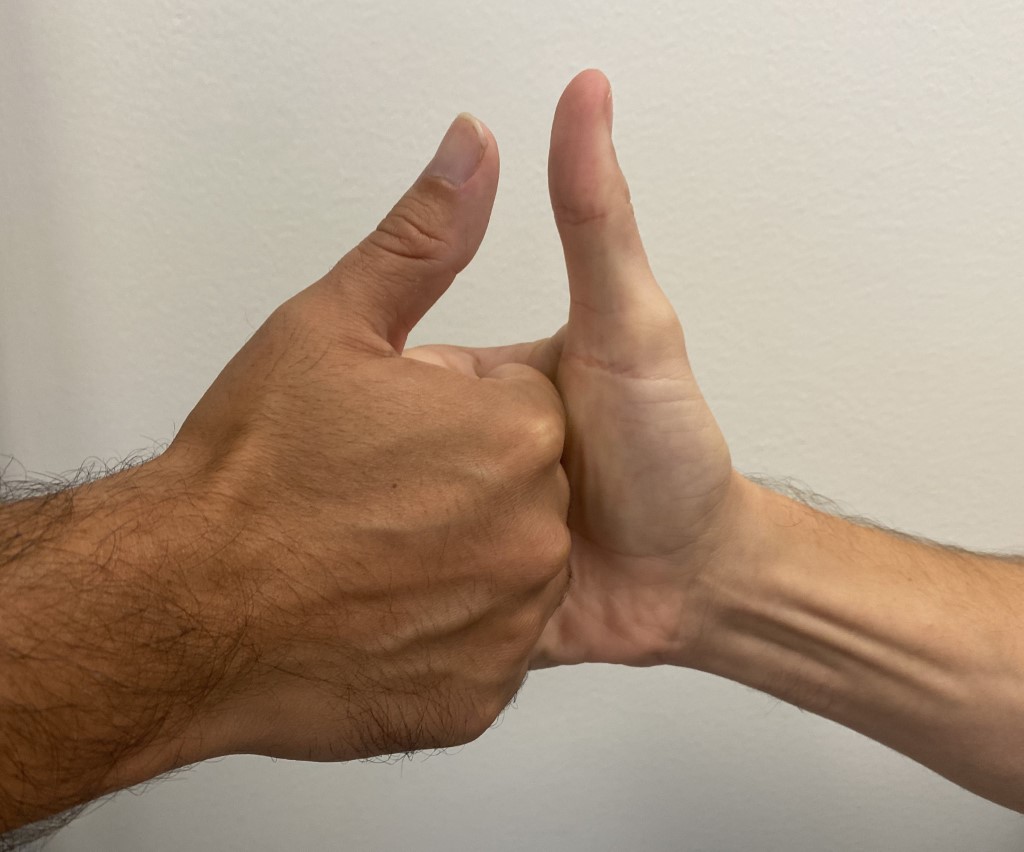 © Wikimedia.org/Erochelson, CC BY-SA
© Wikimedia.org/Erochelson, CC BY-SA
Track cycling is a bicycle racing sport usually held on specially built banked tracks or velodromes using purpose-designed track bicycles. Aerodynamic drag is a significant factor in both road and track racing. Frames are often constructed of moulded carbon fiber, for a lightweight design. More recently, track bikes have employed airfoil designs on the tubes of the frame to reduce aerodynamic drag. Given the importance of aerodynamics, the riders' sitting position becomes extremely important. The riding position is similar to the road racing position, but is ultimately dependent on the frame geometry of the bicycle and the handlebars used. Handlebars on track bikes used for longer events such as the points race are similar to the drop bars found on road bicycles. However, in the sprint event the rider's position is more extreme compared with a road rider. The bars are lower and the saddle is higher and more forward. Bars are often narrower with a deeper drop. Carbon fiber bars of many shapes, as opposed to lighter alloys, are used by many riders for their higher stiffness and durability. (Source: Wikipedia.org, CC BY-SA)
Truck and tractor pulling, also known as power pulling, is a form of a motorsport competition in which antique or modified tractors pull a heavy drag or sled along an 11-meter-wide (35 ft), 100-meter-long (330 ft) track, with the winner being the tractor that pulls the drag the farthest. Tractor pulling is popular in certain areas of the United States, Mexico, Canada, Europe (especially in the United Kingdom, Greece, Switzerland, Sweden, Netherlands, Belgium, Italy, Denmark and Germany), Australia, Brazil, South Africa, Vietnam, India and New Zealand. The sport is known as the world's most powerful motorsport, due to the multi-engined modified tractor pullers. All tractors in their respective classes pull a set weight in the drag. When a tractor gets to the end of the 100 meter track, this is known as a 'full pull'. When more than one tractor completes the course, more weight is added to the drag, and those competitors that moved past 91 metres (300 ft) will compete in a pull-off; the winner is the one who can pull the drag the farthest. The drag is known as a weight transfer drag. This means that, as it is pulled down the track, the weight is transferred (linked with gears to the drag’s wheels) from over the rear axles and towards the front of the drag. In front of the rear wheels, instead of front wheels, there is a 'pan'. This is essentially a metal plate, and as the weight moves toward it, the resistance between the pan and the ground builds. The farther the tractor pulls the drag, the more difficult it gets. (Source: Wikipedia.org, CC BY-SA)
Trampolining or trampoline gymnastics is a competitive Olympic sport in which athletes perform acrobatics while bouncing on a trampoline. In competition, these can include simple jumps in the straight, pike, tuck, or straddle position to more complex combinations of forward and/or backward somersaults and twists. Scoring is based on the difficulty and on the total seconds spent in the air. Points are deducted for bad form and horizontal displacement from the center of the bed. Outside of the Olympics, competitions are referred to as gym sport, trampoline gymnastics, or gymnastics, which includes the events of trampoline, synchronised trampoline, double mini trampoline and tumbling. (Source: Wikipedia.org, CC BY-SA)
A trapeze is a short horizontal bar hung by ropes or metal straps from a ceiling support. It is an aerial apparatus commonly found in circus performances. Trapeze acts may be static, spinning (rigged from a single point), swinging or flying, and may be performed solo, double, triple or as a group act. The name of the apparatus reflects the trapezoid shape made by the horizontal bar, ropes and ceiling support. (Source: Wikipedia.org, CC BY-SA)
A triathlon is an endurance multisport race consisting of swimming, cycling, and running over various distances. Triathletes compete for fastest overall completion time, racing each segment sequentially with the time transitioning between the disciplines included. The word is of Greek origin, from τρεῖς or treis (three) and ἆθλος or athlos (competition). The sport originated in the late 1970s in Southern California as sports clubs and individuals developed the sport. This history has meant that variations of the sport were created and still exist. It also led to other three-stage races using the name triathlon despite not being continuous or not consisting of swim, bike, and run elements. Triathletes train to achieve endurance, strength and speed. The sport requires focused persistent and periodised training for each of the three disciplines, as well as combination workouts and general strength conditioning. (Source: Wikipedia.org, CC BY-SA)
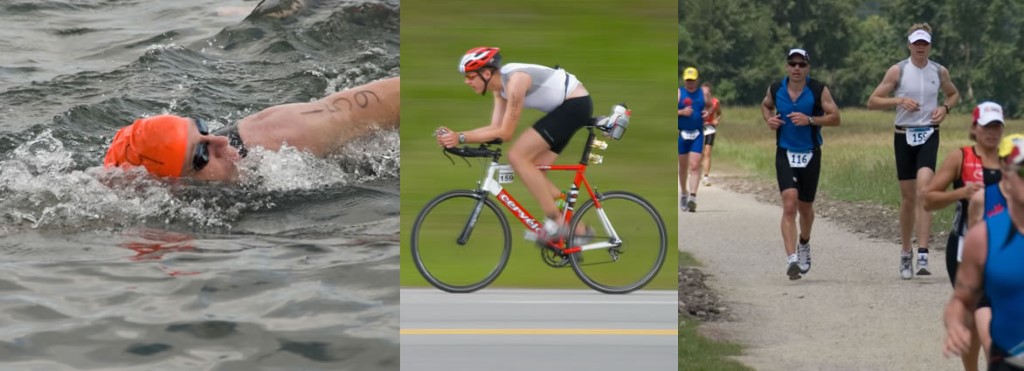 © Wikimedia.org/ JKrabbe, CC0
© Wikimedia.org/ JKrabbe, CC0

Help us promote traffic rules on the internet, together we can make the public road safer for everyone. Post a comment or share on social media!
look at the sign on the road to avoid accidents and horrible driving conditions
I received a 300$ ticket because I passed a police control of other cars/drivers on the right lane of a highway (the control was on the hard shoulder of the highway). Is it really true, that you have to change the lane in such cases? Thanks!
I am an American living in Italy. The Italian Drivers License theory test is the hardest test I have ever studied for and I am in my 70s have multiple degrees, multiple professional certifications. Have to take the Italian Drivers Theory test in Italian. No english. So many rules. More signs in small medieval Italian town I live in then in major US cities I have lived in. No Italian license no driving. No buying or renting a car. Test here was good, clean. Lots of tricky questions on many practice and real official tests. Thanks
Most problems are a result of higher than safe driving speeds. Please just slow down and be patient.
Question 121: Poor translation: Vehicles with polluted fluids prohibited Should be translated as: Vehicles with dangerous liquids prohibited
Question 83: Poor translation: Vehicles with polluted fluids prohibited Should be translated as: Vehicles with dangerous liquids prohibited
Want even more practice? Visit similar websites offering realistic practice driving knowledge tests. Visit us to see what sets our tests apart! https://dkttest.com/capital-territory/
Cool tool! And fun to check whether I remember the rules :) Two things I noticed: Warning for a crossroad side roads on the left and right. While technically that might be the correct translation, this sign tells you, that you are on the main road and have the right of way for the next crossroad and only the next crossroad. Usually (if no sign specifies otherwise) you have to give way to drivers coming from the right at every intersection, which can get a bit annoying in communal areas, so seeing this sign feels less like a warning and more like relief :). A Fahrradstraße is not a lane for cyclists but a street for cyclists, meaning the (whole!) street is intended predominantly for cyclists, who are then allowed to ride next to each other. Cars are allowed to drive there (unless another sign prohibits such), but have to adjust their speed to the cyclists. I believe they are not allowed to pass at all, even if the oncoming lane is empty.
this website is a simpy website i love this its fat and im in my mums basement rn help sui u r a mothr fker
More community